Actually, you should never comment twice on the same subject in a column. Right! I have written about the Santons of Provence once before, "...of the vintners, innkeepers and drinkers who make a pilgrimage to the crib," four years ago, in my third column written for this magazine. I have since learned more, both about the Santons and about Provence. The wine and the connoisseurs, the vines and the winegrowers play a central role there. They embody a slice of life in Provence.
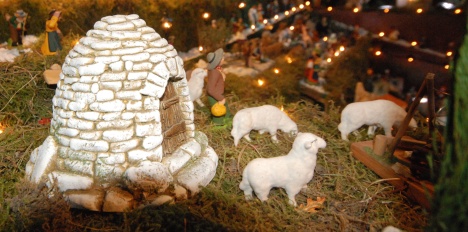 |
| Borie - a hut made of dry stones - with a shepherd and his sheep% a classic picture of Provence |
"The dream of Provence", which accompanies whole generations until today: Olives, pines, wine, wild boar, sunflowers, white horses (myth of the Camargue), pétangue (in the village square), Arles (the landscape of van Gogh). Only the bullfights, there the minds are divided. This Provence - colourful, bright and cheerful - is represented by the Santons. Actually they are nativity figures, but they have little or nothing to do with the Christmas story. And yet we find them in all Provençal nativity scenes at Christmas; they belong to the festive season just as the Christmas tree belongs to it here. They are everyday figures from Provence, dressed in the most colourful garments of their profession, their status, their traditional occasions, their everyday life - and yet they are "santons", in German "little saints".
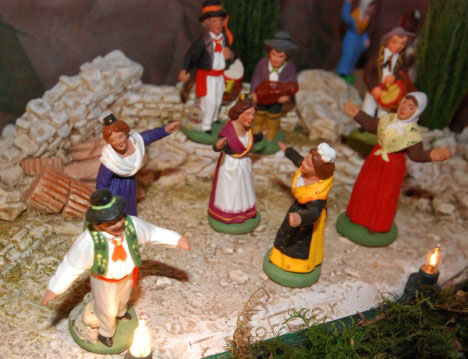 |
| The Farandole% a historical Provençal folk dance% in which various figures are danced in an open round dance |
These nativity figures, which have nothing to do with the Christmas story but everything to do with the traditions of the South of France, were created during the turmoil of the French Revolution. The churches were closed and nativity scenes were not allowed to be set up there. So small figures were made in the families, colourfully painted and grouped around the baby Jesus, Mary and Joseph. During inspections, the "Holy Family" could be quickly removed, leaving behind only a piece of colorful everyday life, a Provence that lives its own life. In this life, of course, there is wine. That is why neither vineyards nor winegrowers, neither coopers nor sommeliers, neither fine nor simple cuisine, neither the vagabond with the "fusel" nor an offer of exquisite wines, neither the innkeeper nor the merry game round may be missing in the nativity scenes. I think a Santons landscape says much more about the wine traditions in the South of France than even so many polished advertising texts.
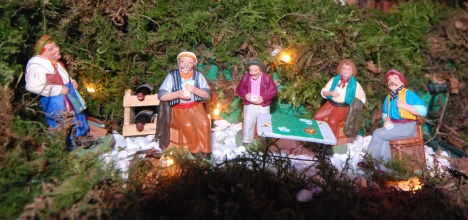 |
| The innkeeper brings the game round new wine bottles from the cellar |
"Vaucluse, the beautiful Provence - Bouches-du-Rhône, centuries of tradition - Var, a very special art of living - the vineyards: character and accent of the South". Buzzwords from the tourist industry; their reality can indeed be found in Provence, their truthfulness can also be verified. But who can and wants to travel to Provence at Christmas. Instead, at best a "Châteauneuf du Pape" comes on the Christmas table, for others "only" a "Côtes du Rhône Village", brave people try a "Cairanne", "Rasteau", "Valréas", "Beaumes de Venise" or even the growth from Mont Ventoux, the mountain of mountains for the "Grande Boucle". One remembers places like Gigondas and Vacqueyras, at the foot of the Dentelles de Montmirail. Maybe - who knows - one also heeds the advice recently expressed in the magazine: to try "authentic, honest wines on a very considerable level", "which - at least for us - are still as good as undiscovered", wines from Duché d'Uzès, the Duchy of Uzès. A small cultural jewel from the heart of this wine region also welcomes us to the Santon crib, the little church of Bourdic.
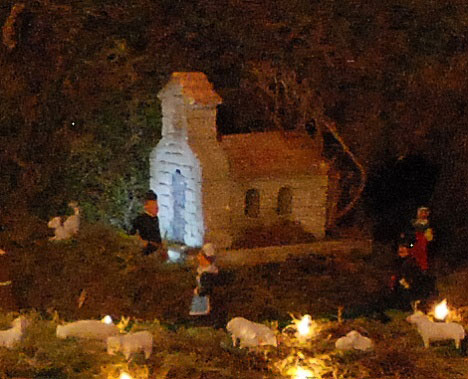 |
| The little church of Bourdic% in the heart of the wine region of the Duchy of Uzès |
Who would think of pouring their own life's dreams (and Provence can be one!) as wine at Christmas. Of course, there are so many other lifelong dreams and with them many other wines, not just the South of France. The "Little Saints" can only be silent witnesses, mementos of a culture that is just everyday life in a great wine region. There, where the Gitanes, the gypsies, move from place to place, like here; where wine is cultivated, harvested and developed, like here; where historic crafts are dying out, like here; where there are sheep pastures, but they are disappearing more and more, like here; where the wines, however, do not taste the same, like here and the landscape is different from here and the weather and the people and the colors and the games and the bread, and the costumes ...
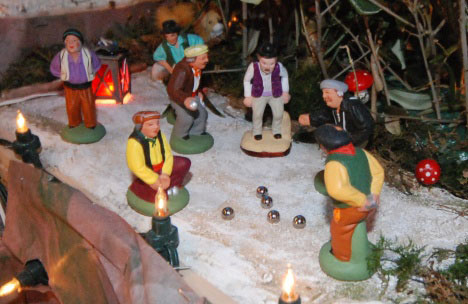 |
| Petanque% the "national game" of the South. A piece of popular culture% whose spirit we can recognize in wine |
And that's the point: the santons don't just stand there. They are divided into many small scenes that tell stories. Stories of life, stories of crying, stories of celebrating and drinking: "There, at Christmas, all the inhabitants go to the manger: the baker, the judge, the postman, the hunter, the fisherman, the pirate...", yes, all of them, even "little non-saints", including wine sinners! They come from all over the world - including ours. There is a little story to each character, just as there are stories to each person and to each wine. They all tell of life and they are all inspired by the same goal, namely to encounter joy, happiness.
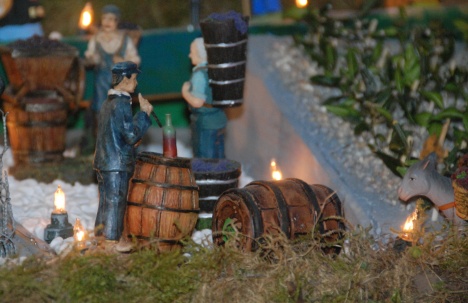 |
| The winegrowers in the vineyard |
I like this symbol, at least since I have also encountered drinkers on the way to the manger. As a "wine connoisseur" I am convinced that among the 500 traditional Santons figures I can also meet that wine freak who only swallows Parker and other points, but also that one who can only find his wine happiness at the discounter, and even that one who has left the wine forum for some reason.
 |
| The cooper |
I wish everyone a wonderful Christmas. And as I said, whoever comes across a little Santon, don't stop him, just march along, to the manger. There is wine there too, good even the Bible says. And I know this, even though I am probably far from being a santon. On the contrary: when it comes to wine, I'm more of a repeat offender!
Cordially
Yours/Yours